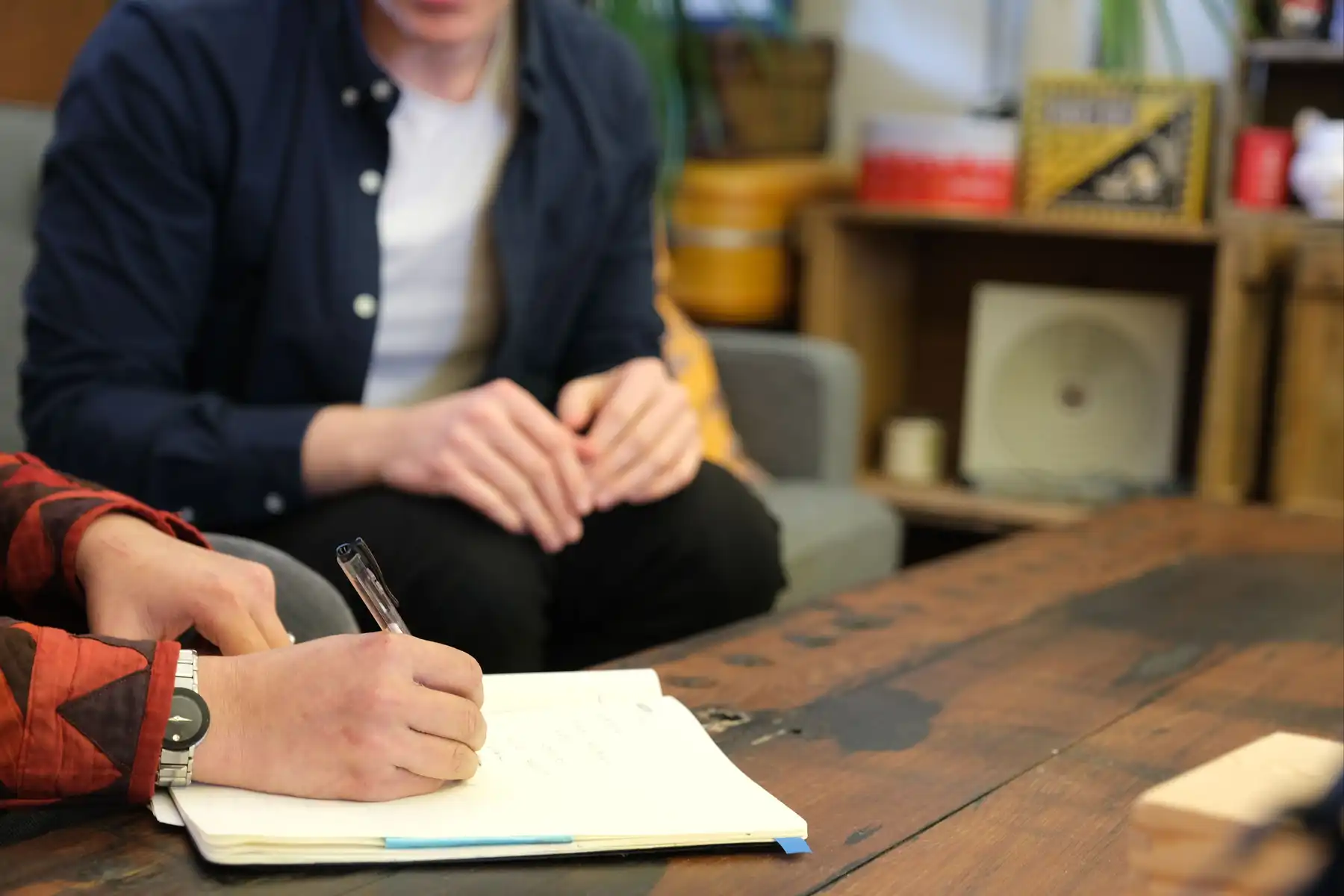
Creating a portfolio can be a daunting task — we know, we’ve done it ourselves! When we’re recruiting for a new role at Springload we usually view over 100 portfolios, quickly scanning for the skills we need to fill our role. Your portfolio needs to stand out, be easily navigable, and show off your skills. Below we break down ten tips for creating a portfolio that helps you sell your work and skills in minutes.
1. Show your process, not just the end product
In your portfolio, we want to know how you got to the end product. Often portfolios only show the end product. There’s a description of the final website design, what it does, and who it’s for, but no information about the process.
Include your user research, sketches, post-it notes, mood boards, customer journey maps, and spreadsheets. We want to see any artefact you created to build towards the final design. These artefacts help us understand how you think and solve problems, and this allows us to fit you into a team and determine if you’re working at a junior, mid-weight, or senior level.
2. Describe your specific role and your team
Instead of only presenting your role in a project, tell us what you specifically did on the project and who you worked with. With any project it’s highly likely that you worked alongside a multitude of people to make the end product. Be clear on who those individuals were and what you did. For example, “I was the assisting UX researcher. I conducted the interviews. The lead UX researcher wrote the discussion guide for me”. It’s a great skill to slot into a team, conduct interviews, and create interesting projects.
3. Select a few really good projects
Depending on where you’re at in your career, you might have lots of projects to select from to show your skills. Remember we’re hunting through lots of portfolios so put your best foot forward and show off the best projects you have, rather than everything you’ve ever done. Going into depth on three to five really good projects that show off your process is much better than 10 not-so-great projects with little information on each. It's about quality not quantity.
4. Choose work that’s suited to the role
If you’re applying for a UI design role, select projects that really show off your skills as a designer. If you were previously an art director and now you want to be a UX researcher, select UX projects that show those skills. It’s better to have fewer projects that are highly suited to the role you are applying for than heaps of projects that show a wide range of skills.
5. Have an ‘about’ page
Your design journey is unique to you. We’re interested in how you came to apply for this role. Where did you study? Where have you worked previously? Have you won any awards? What excites you the most? What do you do in your spare time? Why do you enjoy the role you are applying for? This information helps us understand you, your values, and how you might work alongside our team.
6. Say where you’re based
We get portfolios sent to us from all around the world. If you’re based outside of Wellington it changes the recruitment process, so it’s important to know where you are and where you intend to be. For example, if you are based in Auckland, when do you intend to move? Why are you moving? This helps us find our people.
7. Include a unique trait
When we’re discussing different portfolios we refer to them by a unique trait. This might be a bold colour, a quirky ‘about’ page, the use of eye-catching photos, or an interesting project. Ensure your unique trait suits your personality so that when we meet you for an interview, your portfolio completes the package you are selling — you!
8. Build a simple website
We have found that a website is the best format for a portfolio, rather than a PDF or set of images. A website is easier to move around quickly between different projects and easier to share with colleagues.
9. Customise your cover letter
In your application make sure you include a cover letter that says why you want to work for us. Different companies will have different things that attract you to working there. Think of a specific reason why Springload is the agency for you. Get to know us through our website and the projects we do! This is also great information to bring along with you for your interview.
10. Make sure it’s easy to contact you
We’ve seen your projects, we’ve read your about page, and now we want to contact you for an interview — so make sure your contact details are easy to find! Sometimes people have created a form or hidden their email behind an interesting link. This isn’t the time to be creative. Provide a simple email address, phone number, and LinkedIn details.
Join the Springload Te Pipītanga whānau
You have the tips, now it’s time to put these into practice! We’re always keen to hear from people who are passionate about making the things that matter, better. Check out our careers page for current openings.
Get in touch
Let’s make the things that matter, better.
Email: hello@springload.co.nz
Phone: +64 4 801 8205